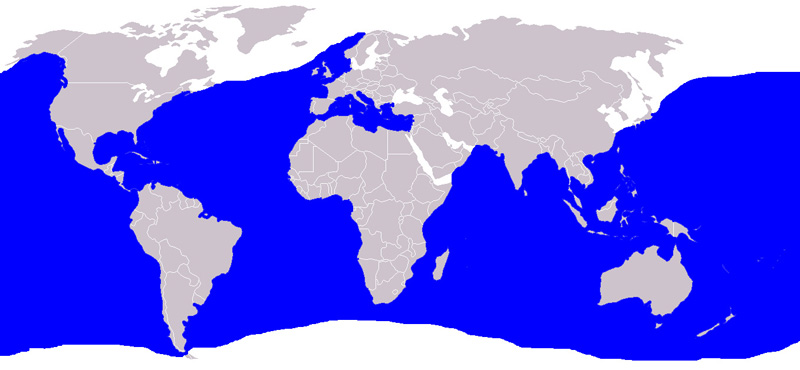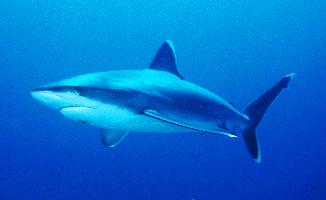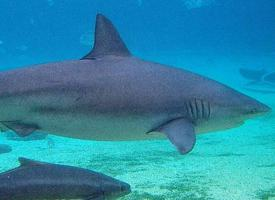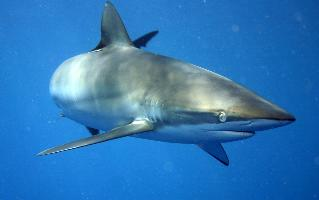
Starea de conservare
| Neînfricat |
Descrierea animalului
The Blue Shark (Prionace glauca) is a species of requiem shark, belonging to the family Carcharhinidae, known for its distinctively slender body and beautifully vibrant blue coloration, from which it derives its common name. This pelagic shark inhabits the deep waters of the world's temperate and tropical oceans, adept at navigating the vast, open sea far from land.An adult Blue Shark exhibits a sleek, streamlined profile, with a long, conical snout and large, round eyes that are equipped for enhanced vision in the dimly lit depths of its marine environment. The species can reach lengths of up to 3.8 meters (12.5 feet), though females are generally larger than males, showcasing a degree of sexual dimorphism. Its dorsal surface boasts a striking indigo to cobalt blue shade, which gracefully fades into a vibrant, lighter blue on its sides, and transitions into a pure white on the ventral side. This coloration provides an effective camouflage mechanism, blending with the ocean waters from both above and below, thus aiding in both predation and protection from predators.
The Blue Shark's diet is primarily composed of small fish and squid, though it is known to be opportunistic, occasionally preying on seabirds and larger marine mammals. Its long, slender pectoral fins allow for efficient cruising through the open ocean, conserving energy on long migrations in search of food and breeding grounds. The species is also known for its remarkable ability to cover vast distances, with some individuals migrating across entire ocean basins.
Reproduction in Blue Sharks is viviparous, with females giving birth to live young after a gestation period of 9 to 12 months. Litters can be remarkably large, ranging from 25 to over 100 pups. This high fecundity is a vital survival strategy for the species, compensating for the high mortality rates faced by the young due to predation and other environmental pressures.
Despite their wide distribution and seemingly abundant numbers, Blue Sharks are considered to be near threatened by the International Union for Conservation of Nature (IUCN), primarily due to pressures from human activities. They are frequently caught as bycatch in commercial fisheries, targeted for their fins, which are highly valued in certain cultures for making shark fin soup, a delicacy. This practice, combined with the species' slow growth rate and late maturity, places significant stress on their populations.
The Blue Shark plays a crucial role in the marine ecosystem, acting as both predator and prey in the oceanic food web. Their wide-ranging migrations contribute to the genetic diversity and health of marine environments across the globe. Conservation efforts are essential to ensure the survival of this magnificent species, requiring international cooperation to manage fisheries sustainably and protect critical habitats. Through such measures, we can hope to preserve the beauty and ecological significance of the Blue Shark for future generations to appreciate and study.
Harta răspândirii

Animale similare
Fotografii noi cu animale
Top 10 animale
- Dolphin gull (Leucophaeus scoresbii)
- Diana monkey (Cercopithecus diana)
- Moustached guenon (Cercopithecus cephus)
- Galápagos tortoise (Geochelone nigra complex)
- Stone loach (Barbatula barbatula)
- Japanese macaque (Macaca fuscata)
- Greek tortoise (Testudo graeca)
- Russian tortoise (Testudo horsfieldii)
- Common flying dragon (Draco volans)
- Galápagos penguin (Spheniscus mendiculus)


